Drones are a useful tool in wildlife conservation and management, yet the effects of using drones around wildlife should be strongly considered
[Updated April 2020]
This post contains affiliate links for which Expedition Wildlife may receive a commission (where applicable) at no additional cost to you.
We aren’t new to the incredible technological feat that are Unmanned Aerial Vehicles (UAVs).
Nathan and I have honed our drone skills to share with others the stunning landscapes we’ve visited. Professionals and hobbyists alike use drones to explore and analyze the world around us, from an aerial perspective, that is.
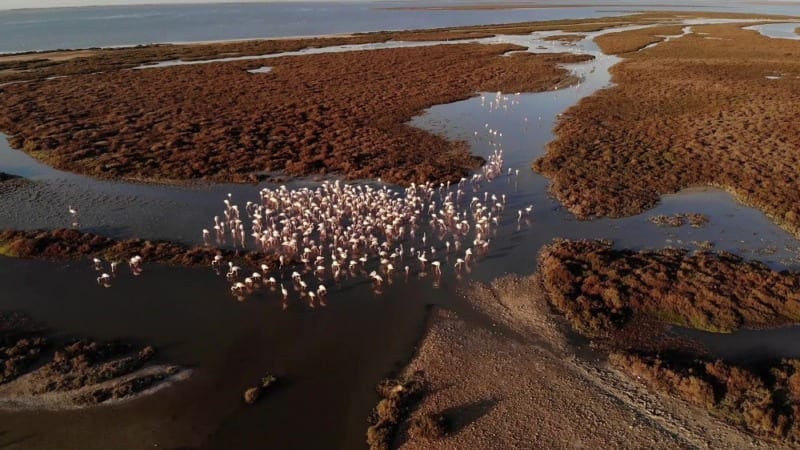
Drones offer us the ability to view wildlife in places we otherwise could not go. Here, a flock of Greater Flamingos forages in the Camargue. Image by Nathan Rolls
How are Drones Used in Wildlife Science?
In wildlife ecology, landscape imagery can help tie together the larger ecological concept of where animals live and how they interact with their environment.
In wildlife management, the use of drone technology has become even more popular in recent years. UAVs are used to count animals that congregate, especially those in colonies such as shorebirds and seals. In addition, they’re used to find and ID creatures in remote landscapes, including the ocean.
Drones are utilized as a tool for counter-poaching operations and mapping habitat. The benefits of using such technology is evident in many fields, including wildlife sciences. Though certainly, there’s more that individual users can learn in honing their craft.
Drones continue to become an ever more popular piece of equipment for hobbyists looking to capture their explorations. There are now drones for every budget.
One of the most popular drone manufacturers – DJI – made approximately $2.7 billion in 2017. The numbers only continue to increase as technologies emerge in the art of drone science and technology.
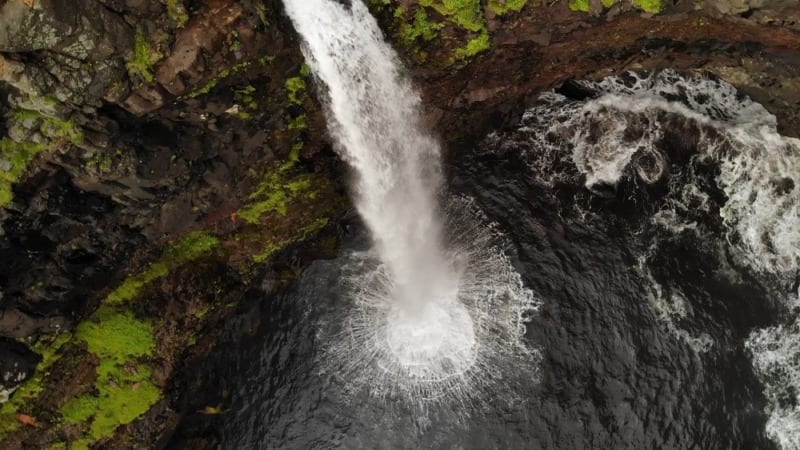
Stunning videos and images can be captured using drones. This is an aerial view of Gasadalur Waterfall in the Faroe Islands. Image by Nathan Rolls
Responsibilities of Using Drones Around Wildlife
Drone users must learn and understand the laws associated with drone flying and use in their region, as it changes for every state, country, and property.
For example, there are flight restriction zones around populated areas, near military installations and airports, in conservation areas and some national parks and preserves, and more.
There are also maximum height restrictions for drones in flight. Within a certain distance of any airport or secure location is where restrictions are highest. Violations of these regulations can lead to massive fines and possibly jail time.
The DJI website specifically states that safe flying requires the operator to keep the drone within their line of sight, and never fly above people, animals, or moving vehicles. However, the meaning of “line of sight” becomes distorted when the operator takes no notice of how creatures around them are reacting in association with the drone’s presence.
When using drones around wildlife, become a naturalist
In one of our previous posts about honing your skills to become a better wildlife photographer, we emphasize one of the most important wildlife photography skills is becoming a wildlife naturalist.
It’s difficult to predict the mannerisms and movements of an animal. This is exemplified if the drone operator doesn’t understand the behavioral components of the animals they are observing. This is the essence of becoming a naturalist – understanding and respecting when the animal you are observing is being affected by your presence.
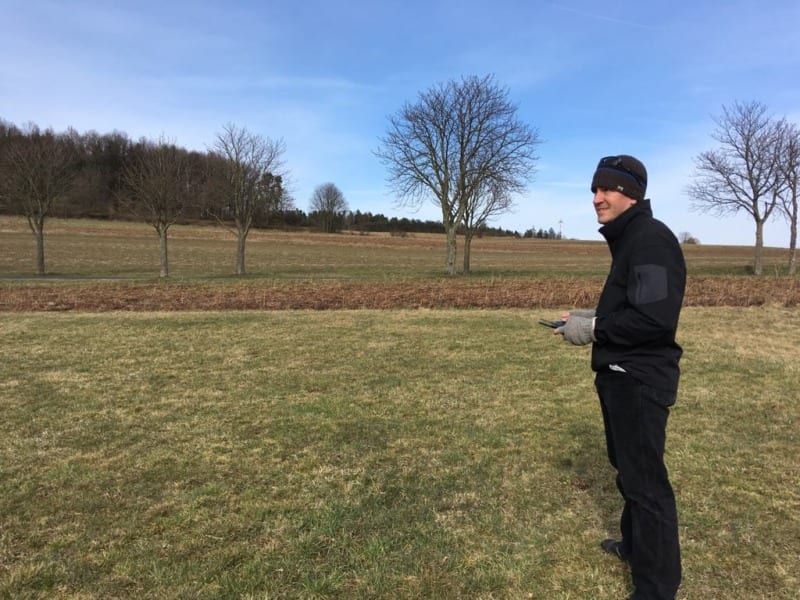
Nathan keeps a careful eye on the drone while it is in flight. Photo by Christa Rolls
Read more about ethical practices to consider when watching wildlife
Be Conscientious of your Effect on Wildlife
While capturing the scenery around you, it’s imperative to become more diligent in how you are using drones around wildlife..
In November 2018, a video went viral of a mother and baby bear running up a steep snow bank in Russia. Many posts of the video captioned the scene as a lesson in perseverance and persistence. That, if you try hard enough, you can defeat that uphill battle.
The reality of the situation is that some creatures have more sensitivity to noises and vibrations than humans do. The high pitched frequency of the buzzing drone startled the mother bear and her cub, putting them in a precarious situation that could have cost the young bear its life.
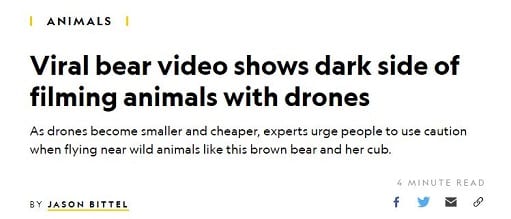
National Geographic’s headline article about using drones near wildlife. Photo from Nationalgeographic.com
Leave close-up drone film to the *wildlife professionals*
Professionals working with National Geographic and the like have the means and equipment to secure less invasive technologies. These pieces of equipment are priced far higher than anything a regular drone user would purchase.
They also have the naturalist know-how to integrate themselves for days, weeks, or months at a time, habituating wildlife to their presence without affecting them outwardly. These people are *professionals* and it should be noted that not just anyone can approach an animal with their drone.
YouTube is riddled with videos of wildlife being flushed (flying or running away) because of a drone’s presence.
For example, we visited the Camargue in Southern France to film and photograph Greater Flamingos and other birds. We looked up other videos produced from the area, and we horrified at what we saw.
Drones were flown directly up to flocks of wading and foraging flamingos, and unsurprisingly, these videos depicted the birds flying away from the camera. Without beating around the bush, this is harassment.
So, how do we combat this issue and prevent it from occurring in the field?
Aside from becoming a naturalist, we suggest having a spotter when out videoing in proximity to wildlife.
This is easier with two people, as the person operating the drone has to both look at their screen and look up ensure line of sight. Trying to also monitor the wildlife in the area is an added challenge here.
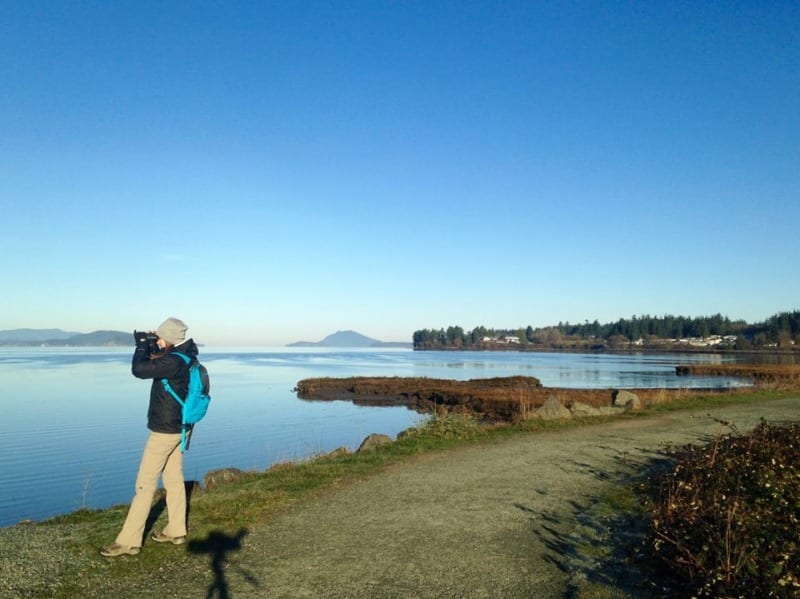
Taking the time to learn and understand more about the animals we spend our time around can make us better naturalists and help reduce our impact on wildlife. Photo by Christa Rolls
When we fly our drone, I always have my binoculars on me. I assess the area prior to flight time to see what kind of wildlife might be in the vicinity. I consistently watch those individuals as the drone launches and moves about in the air. As soon as we notice a change in the animals’ behavior in obvious association to the drone’s presence, we bring the drone back and discontinue flying in that area.
Time for Plan B on footage location!
What effect might we have on wildlife while in the field?
Energy-making Decisions
Throughout the year, wildlife have to consistently make decisions about how they are going to use their energy.
These decisions might be defending their territory during the breeding season, or collecting food for themselves or their young. Moreover, many animals save up fat stores in the event that food availability is low, choosing their next move to get food wisely.
These are instinctual and important life history decisions for different kinds of wildlife.
When we throw ourselves, and our drones, into the mix, we upset this balance. While animals can adapt, even those that are used to humans can be negatively affected by our presence. When our drones scare off animals or cause birds to come dive bomb the perceived intruder, they are using up essential energy that they would otherwise be able to use for essential purposes.
Damage to Property and Wildlife
Speaking of dive-bombing birds, if you’ve ever been dive-bombed by an upset bird, you know they can have a heavy hit. Just imagine what that would do to the propellers on your drone. And how that can affect the health and safety of the bird.
While in the Faroe Islands, we had to be very cautious and conscientious about where we flew our drone. Black Oystercatchers are INCREDIBLY territorial. Just the sound of the drone launching from across a body of water would be enough to call in at least half a dozen birds to expel the perceived predator and threat.
Without a spotter in this situation, we would have known only too late the impending swarm of birds honing in on the drone, and it would have been lost to a Faroese lake, as would possibly an Oystercatcher.
Negatively Impacting Sensitive Wildlife
*Be cautious about flying in areas you know endangered or sensitive wildlife inhabit. This goes for breeding seasons and migration seasons, too.
In many countries, drone use near endangered or threatened wildlife is considered “take”, as it is animal harassment. These violations can incur heavy fines if the individual is caught.
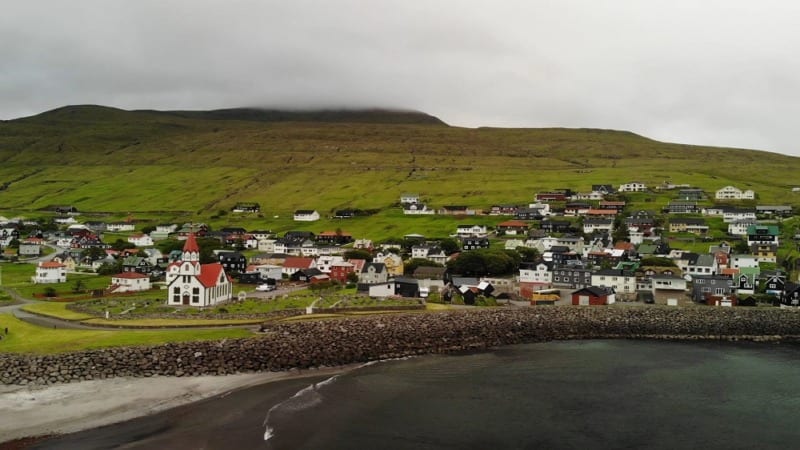
About 60 seconds after this footage was taken, we had to discontinue using the drone in this location. Oystercatchers nesting nearby became visibly agitated from across the water. Image by Nathan Rolls
Let’s Set the Example of Properly Using Drones around Wildlife
It’s our responsibility as ethical and responsible drone users and wildlife caretakers to limit the effects we have on the animals around us.
Many locations recognize drone flight around wildlife as harassment and as such, have implemented laws and regulations for the prohibition of drone use in many places.
The more people who abuse the privilege of getting to fly recreational drones, the more limitations everyone will have in using drones.
Setting a good example for ourselves and others can help to limit these regulations by being responsible drone owners and users. We urge you to speak out and report anyone you see improperly using or abusing the privilege of flying their drone.
Check out some of the incredible footage we were able to capture in the Camargue and the Faroe Islands while respecting our subjects’ space.
Do you have a drone? Are these points you’ve considered for using a drone around wildlife? Feel free to message us with any questions about best practices in drone use!
Happy flying,
Christa and Nathan
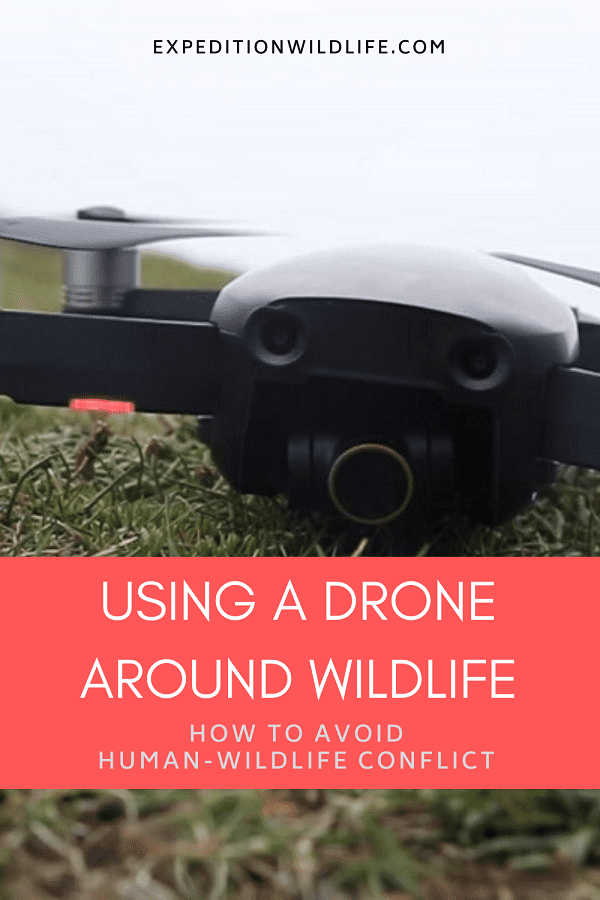

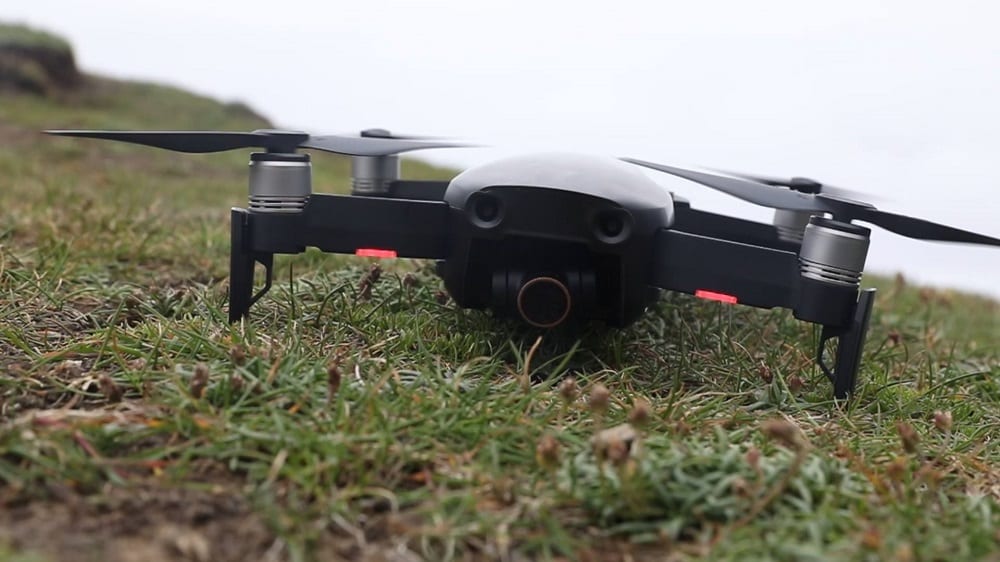

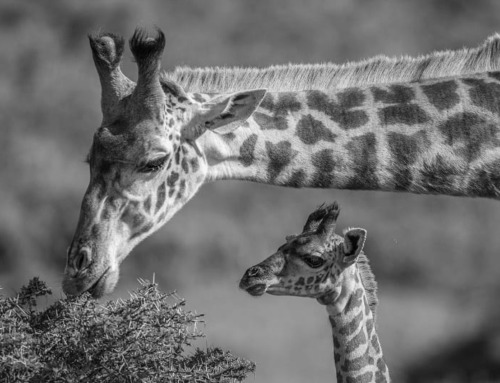
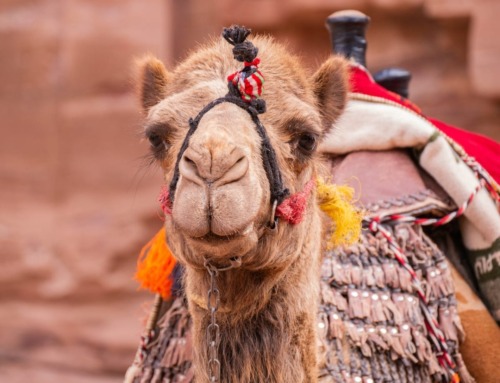
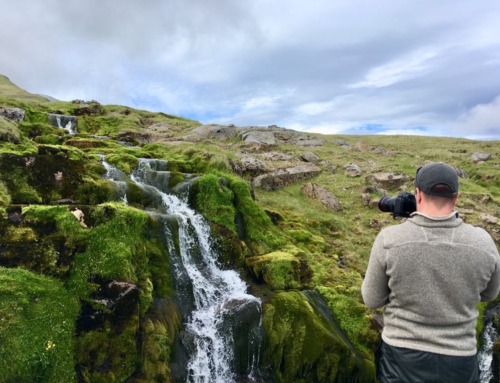
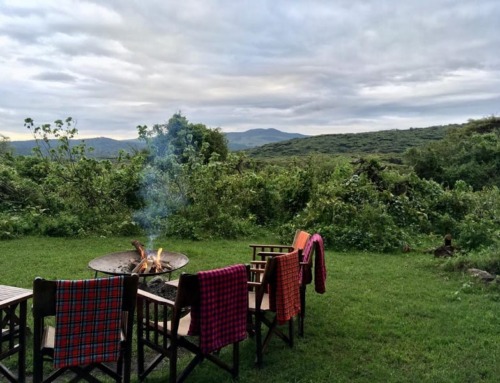
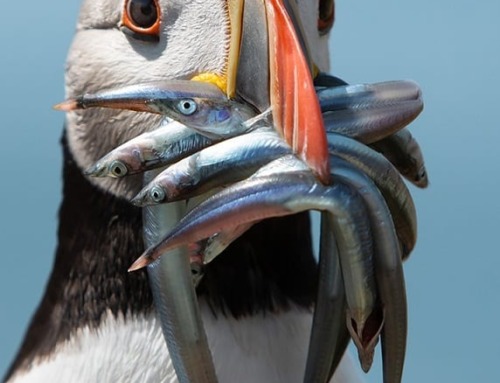
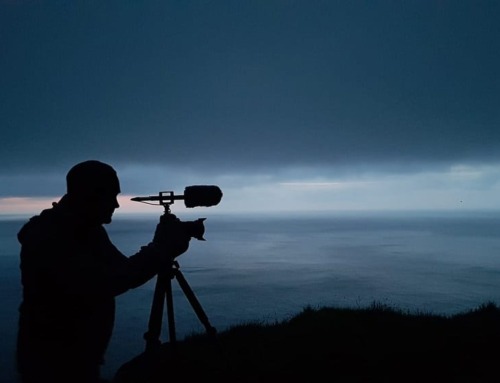
Leave A Comment